When it comes to my appreciation of Christmas, I’m a real Scrooge, so every December I search for a photo destination to escape the crazy commercialism of the season. One Christmas a few years ago I settled on Bosque del Apache along the Colorado River in central New Mexico – one of the most beautiful National Wildlife Refuges in the United States. The name means “Apache Woods” and was given to the wide floodplains by early Spanish explorers who were frequently attacked by Apache warriors who camped beneath the cottonwoods along the river. The Spanish invaders and Apache encampments are now a distant memory and today the area is a major wintering area for great flocks of bugling sandhill cranes.
The cranes begin to arrive from their Arctic nesting grounds in late October, and by Christmas there can be over 10,000 of them settled onto the refuge. Corn and grain crops grown in the refuge induce the birds to overwinter and keep them from leaving the area and potentially damaging the surrounding farmers’ fields.
During the night the cranes retreat to the shallow water of ponds where they are surrounded by vigilant neighbours and more easily alerted to the approach of nocturnal predators such as coyotes.
On cold evenings, the ponds where the cranes seek nocturnal refuge sometimes freeze.
The wintering cranes share the refuge with great numbers of wintering snow and Ross’s geese.
The birds stay in the refuge until early February when the first noisy throngs start to head back north again. Nothing quite compares with the unearthly wild music of a flock of bugling cranes as they fly overhead. Few sounds in Nature can stir the embers of the human heart like the primordial chorus of a flight of loquacious cranes. A trumpeting crane can be heard as far away as 4 kilometers (2.5 mi.), and loudness of its calls results from an especially long trachea (windpipe) which coils inside the keel of its breastbone, greatly amplifying the sound.
As well as being a loudmouth, the sandhill crane is also a painter that purposefully dabs its feathers with vegetation to alter their colour. One time in the northern Yukon I hid under some camouflaged cloth and spied on a pair of cranes while they preened. I saw both birds repeatedly pick up wads of wet mud and rotting vegetation and dab it on the feathers on their back and sides. Afterwards, I examined the mud, and it was full of red iron pigments. Applying the pigmented mud stained the birds’ gray feathers a rusty colour. Biologists speculate that painting its plumage during the breeding season camouflages a sandhill and helps it to avoid detection when it is sitting on its nest on the tundra.
Two summers ago, in the Canadian Arctic, I accidentally flushed a well-camouflaged, incubating crane off its nest when I was less than two metres away. The adult immediately mounted an elaborate distraction display to lure me away from its exposed eggs.
Another time in the Arctic, I again failed to see a crane incubating on the open tundra. When the bird flushed, I saw it had been warming a newly hatched chick. Typically, egg number one hatches two to three days before egg number two.
Sandhill cranes usually “dance” as part of their spring courtship ritual, but this pair was displaying at the end of July. Both birds were moulting and missing primary flight feathers and likely had never nested or had lost their clutch to an egg thief. Either way, I’m guessing that this late season dancing session was simply an attempt to reinforce the pair’s life-long bond.
About the Author – Dr. Wayne Lynch
For more than 40 years, Dr. Wayne Lynch has been writing about and photographing the wildlands of the world from the stark beauty of the Arctic and Antarctic to the lush rainforests of the tropics. Today, he is one of Canada’s best-known and most widely published nature writers and wildlife photographers. His photo credits include hundreds of magazine covers, thousands of calendar shots, and tens of thousands of images published in over 80 countries. He is also the author/photographer of more than 45 books for children as well as over 20 highly acclaimed natural history books for adults including Windswept: A Passionate View of the Prairie Grasslands; Penguins of the World; Bears: Monarchs of the Northern Wilderness; A is for Arctic: Natural Wonders of a Polar World; Wild Birds Across the Prairies; Planet Arctic: Life at the Top of the World; The Great Northern Kingdom: Life in the Boreal Forest; Owls of the United States and Canada: A Complete Guide to their Biology and Behavior; Penguins: The World’s Coolest Birds; Galapagos: A Traveler’s Introduction; A Celebration of Prairie Birds; and Bears of the North: A Year Inside Their Worlds. In 2022, he released Wildlife of the Rockies for Kids, and Loons: Treasured Symbols of the North. His books have won multiple awards and have been described as “a magical combination of words and images.”
Dr. Lynch has observed and photographed wildlife in over 70 countries and is a Fellow of the internationally recognized Explorers Club, headquartered in New York City. A Fellow is someone who has actively participated in exploration or has substantially enlarged the scope of human knowledge through scientific achievements and published reports, books, and articles. In 1997, Dr. Lynch was elected as a Fellow to the Arctic Institute of North America in recognition of his contributions to the knowledge of polar and subpolar regions. And since 1996 his biography has been included in Canada’s Who’s Who.



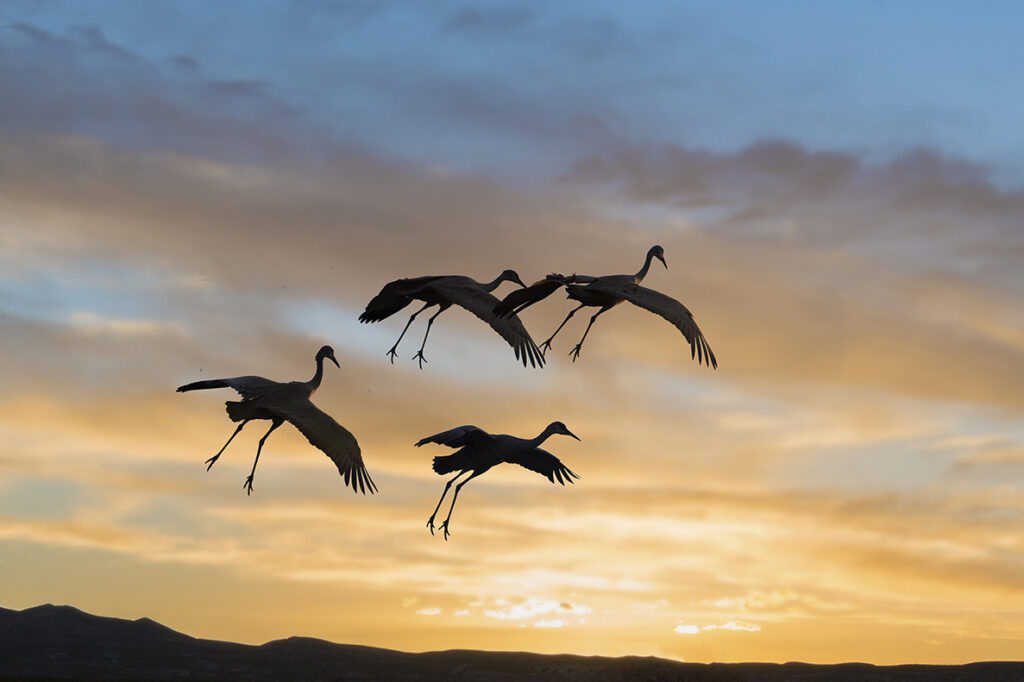

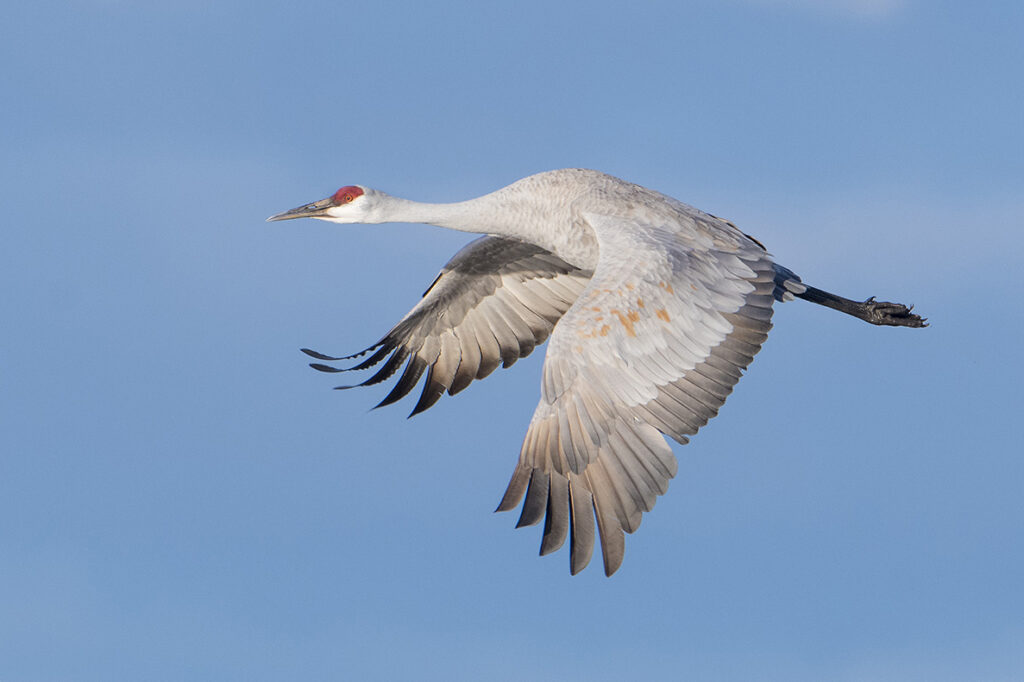
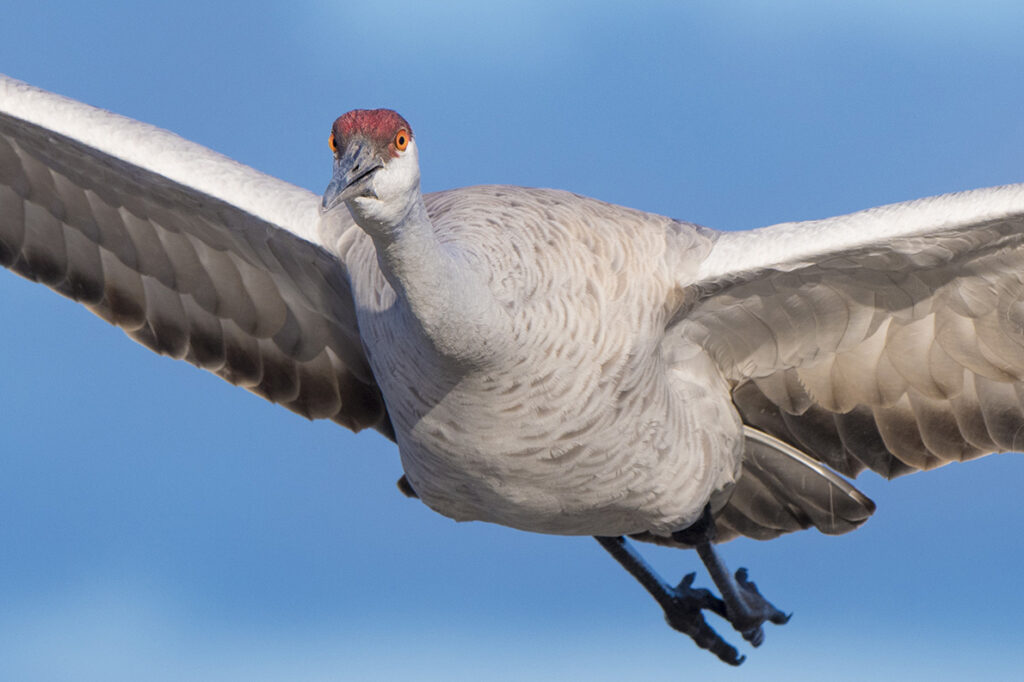
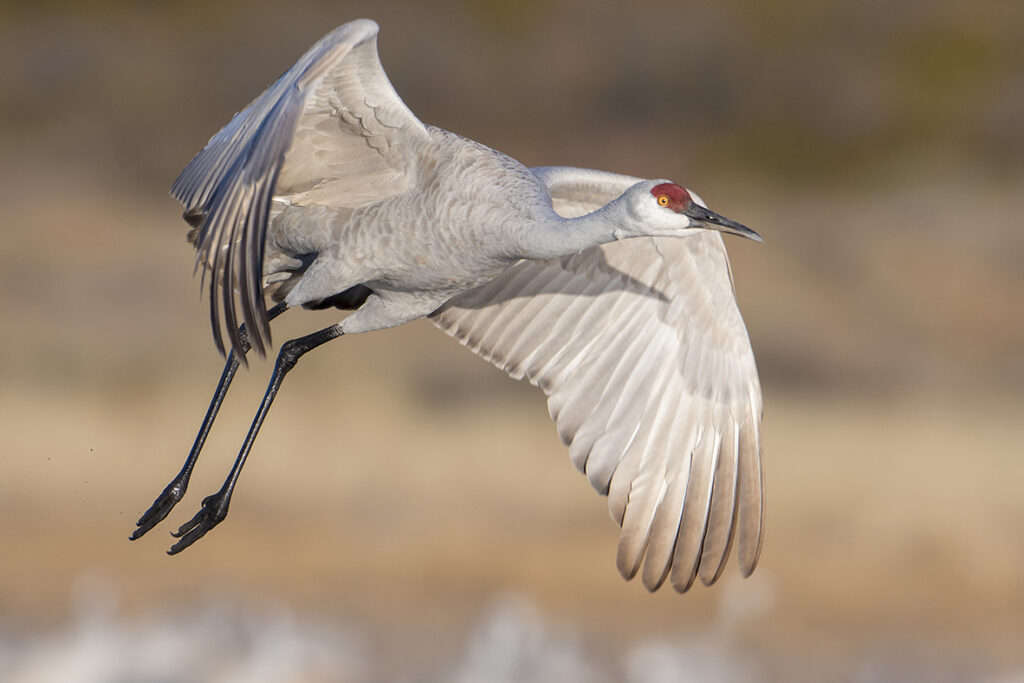
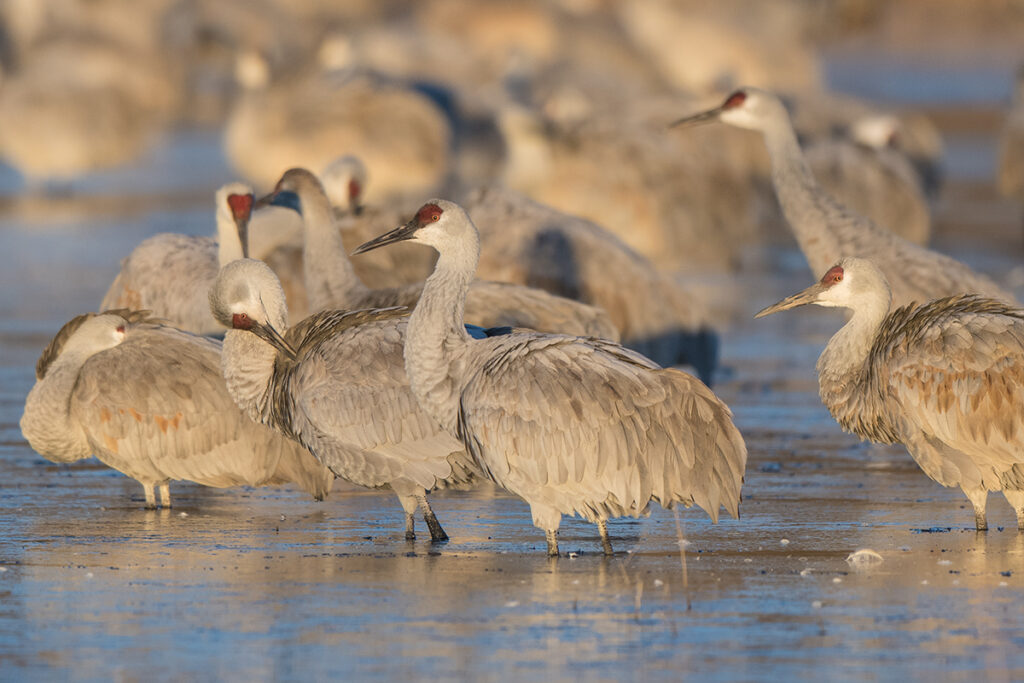
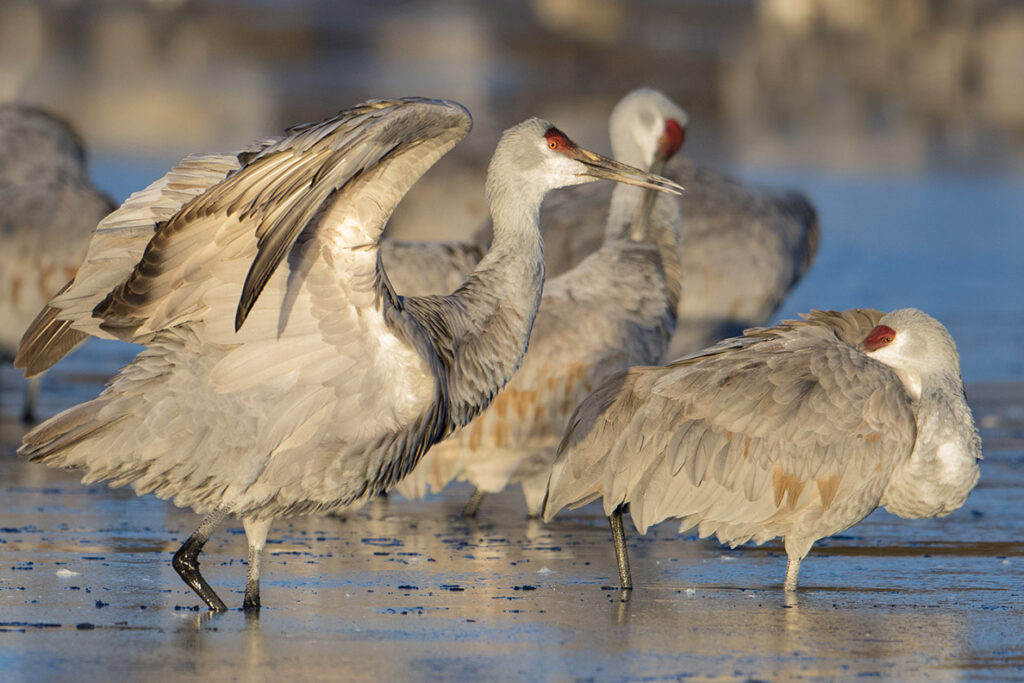
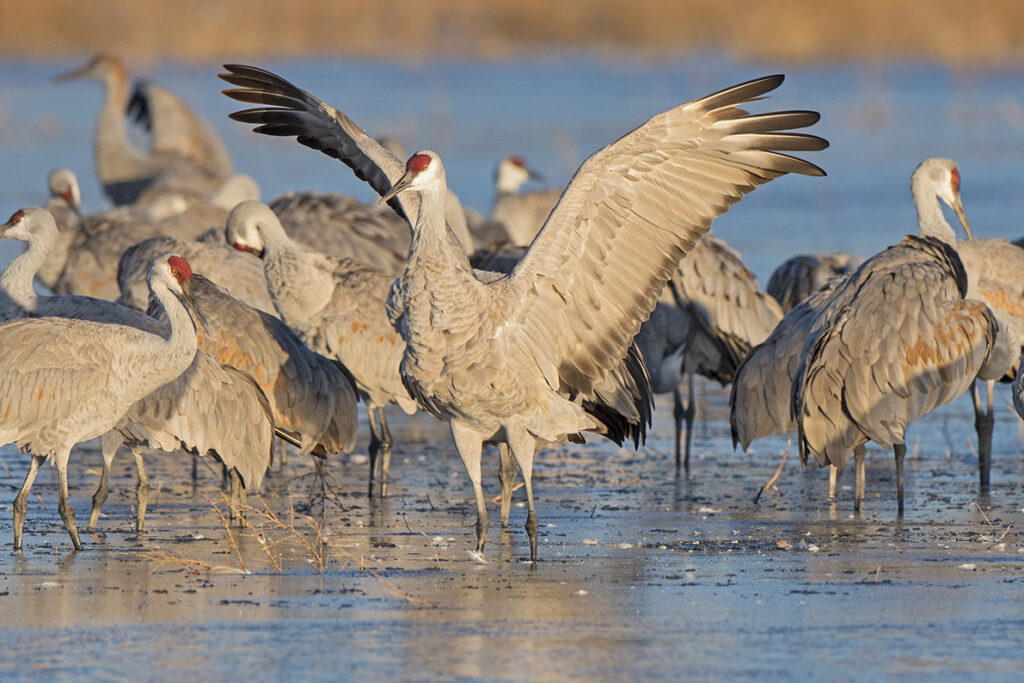
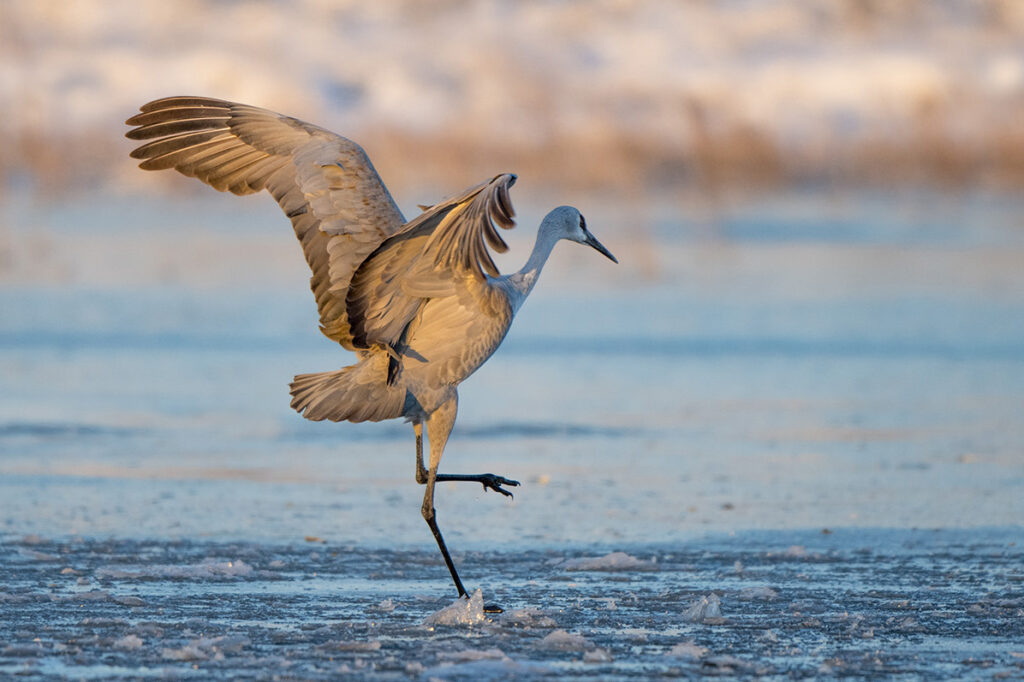


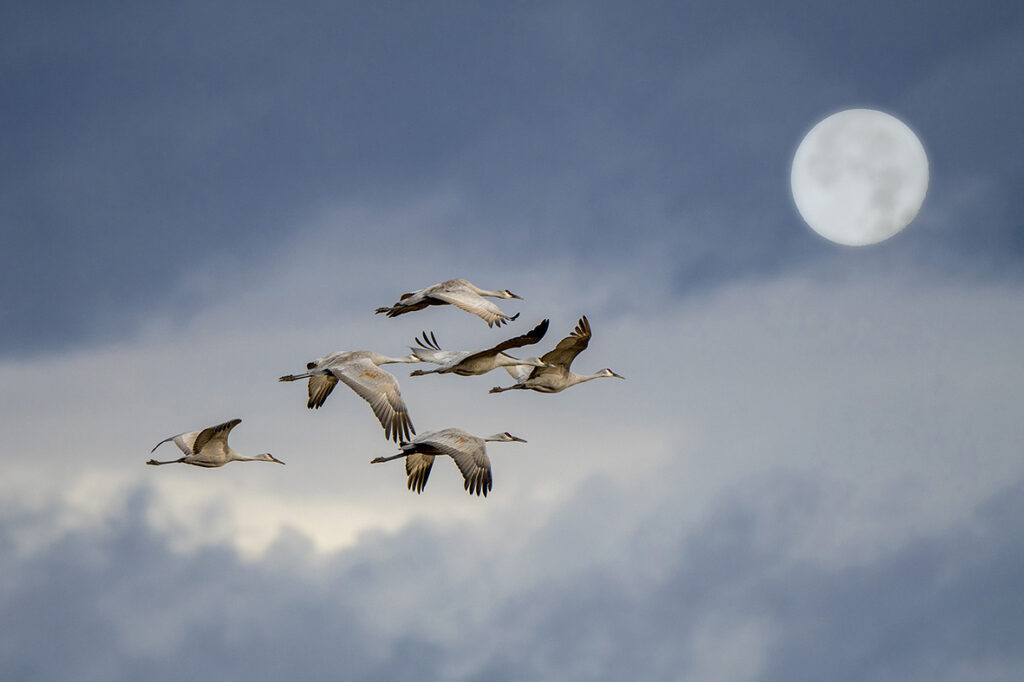
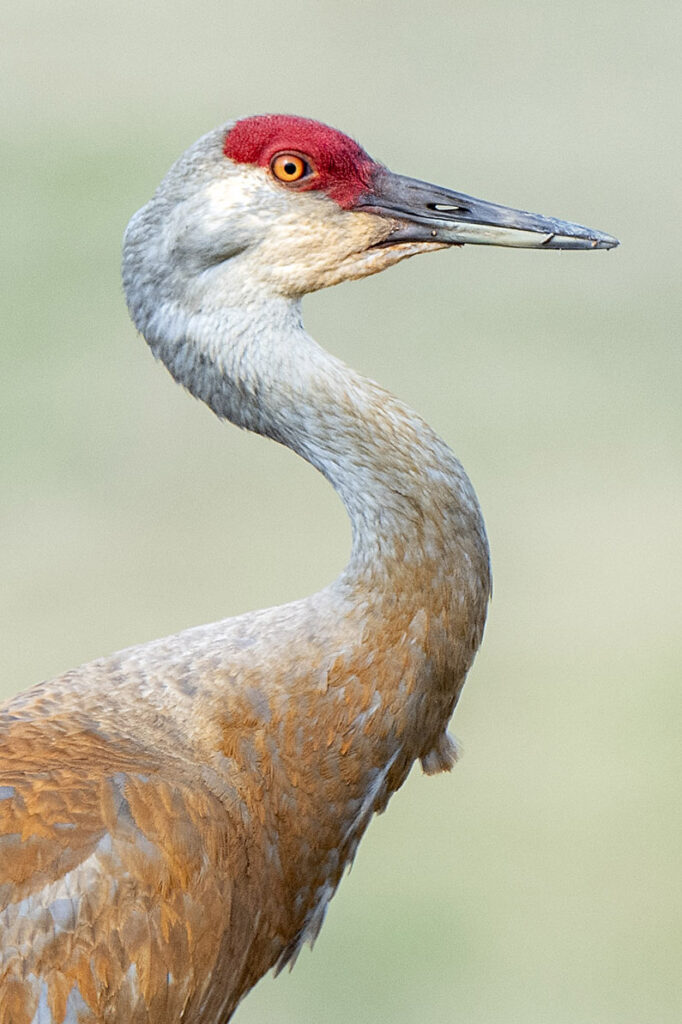
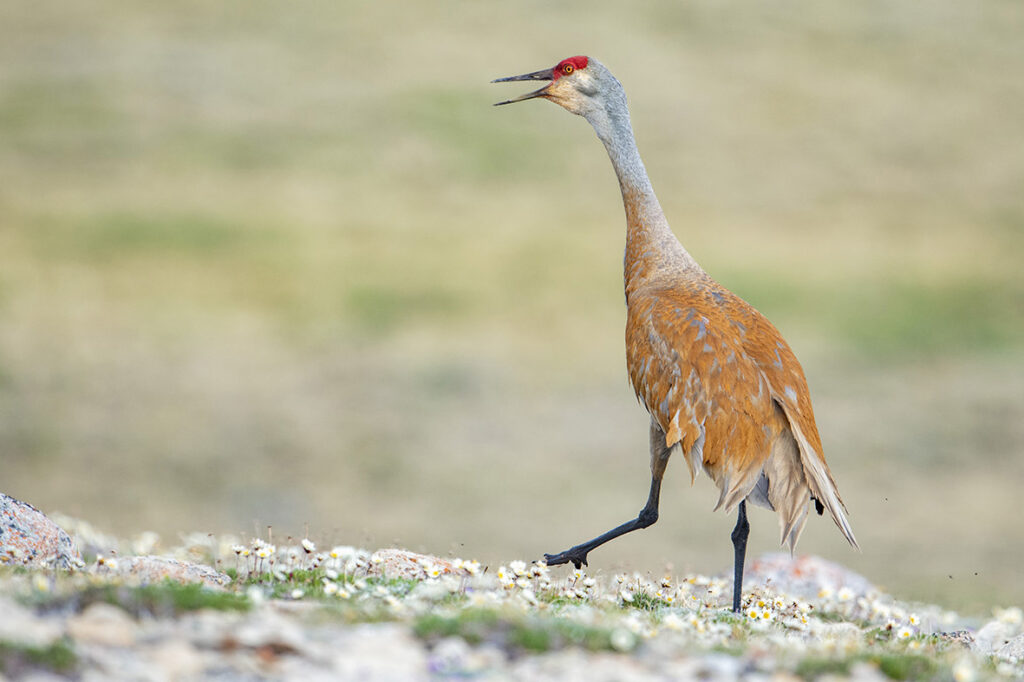

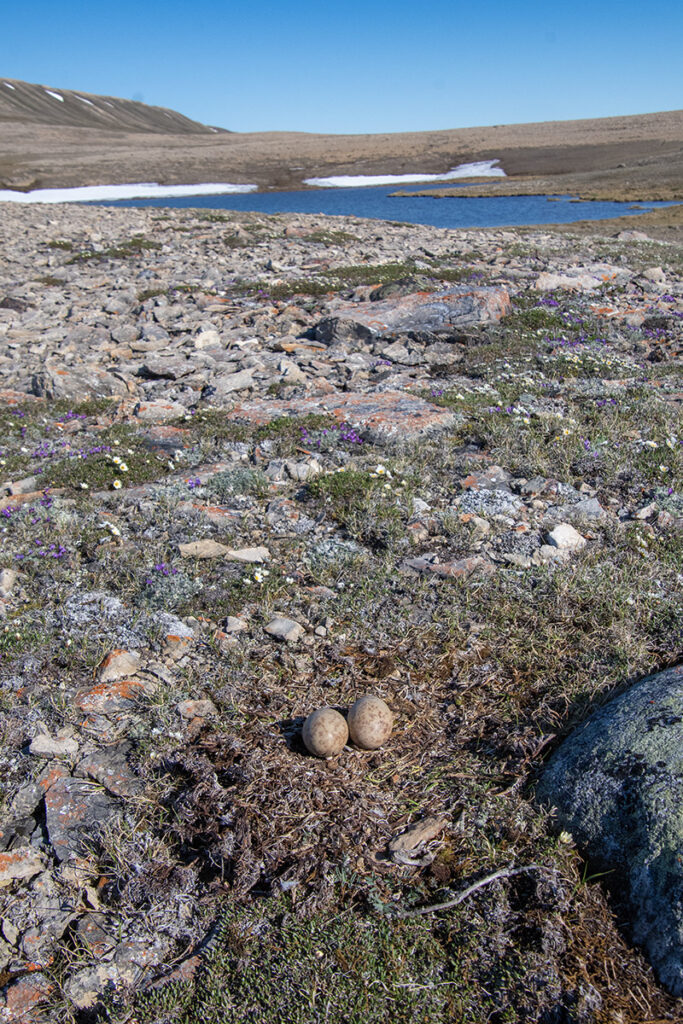
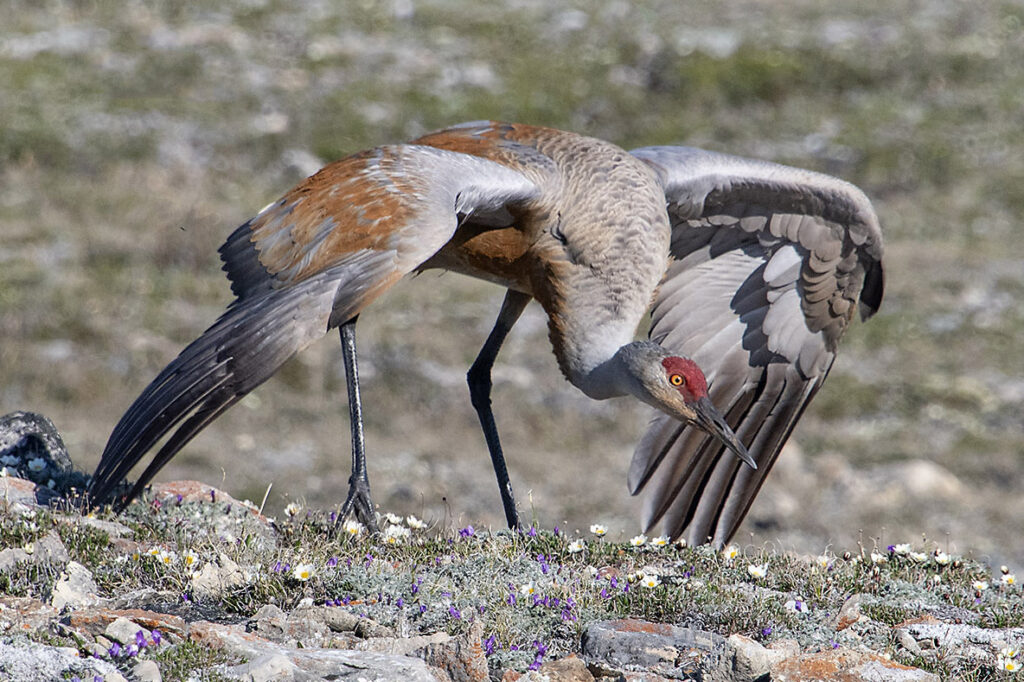

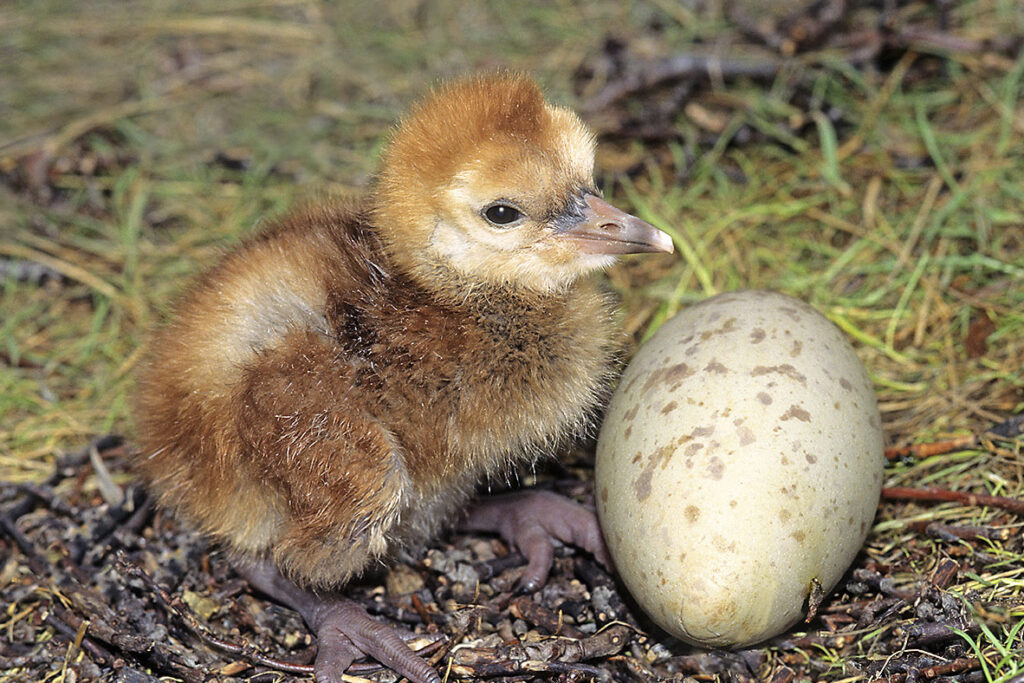


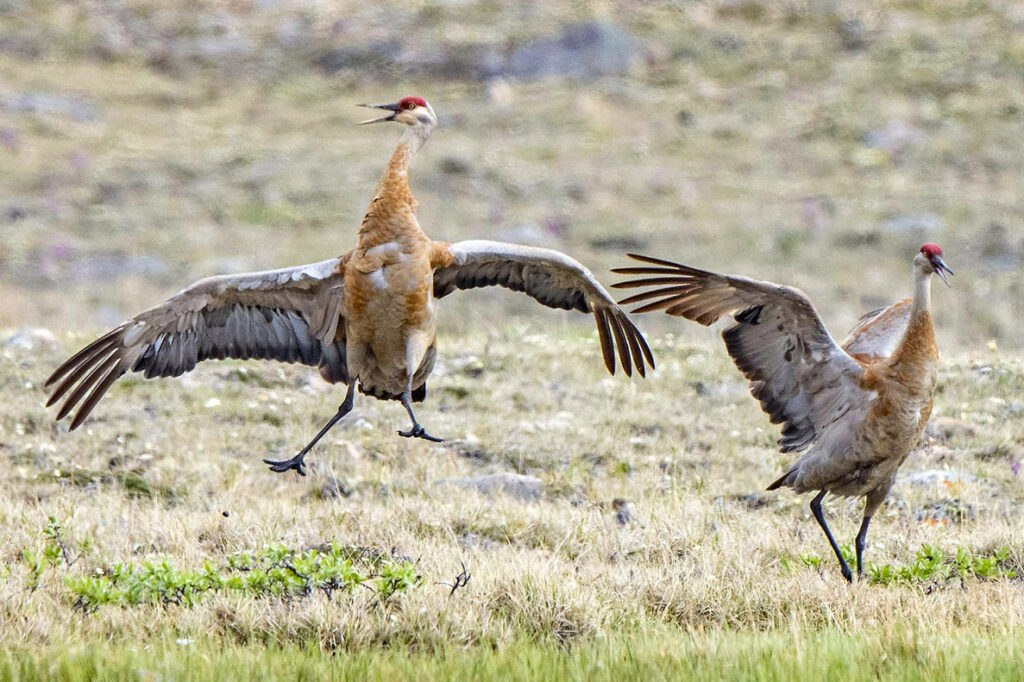






Great images of the cranes. I really liked seeing them in the Arctic when I was there – I mainly see them in the lower mainland of BC. Good article – must visit Bosque del Apache soon and see them there in such great numbers.
Thanks Carol. Good luck with your crane quest.
Wayne
WOW
Thanks. I’m never quite sure if readers like the nerdy biology details in my column.
I absolutely love Sandhill Cranes. I’m lucky enough to live close to Long Point, Ontario, so I get my fill of Sandhill Cranes every year.
Hi Scott. I guess I’m not the only one who loves cranes. Thanks for your comment.
Wayne
You’re very welcome. There’s nothing more glorious than a sky full of Sandhill Cranes!